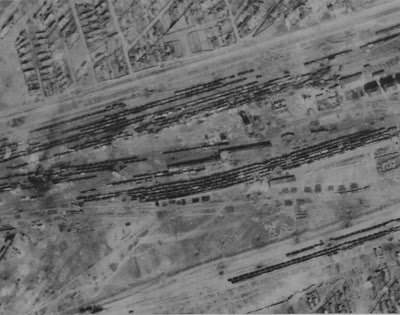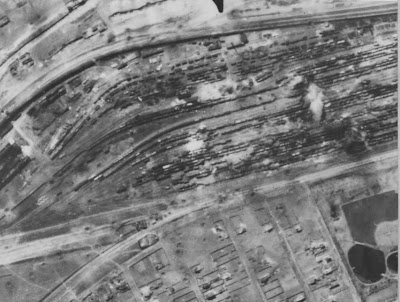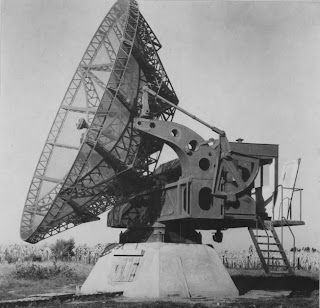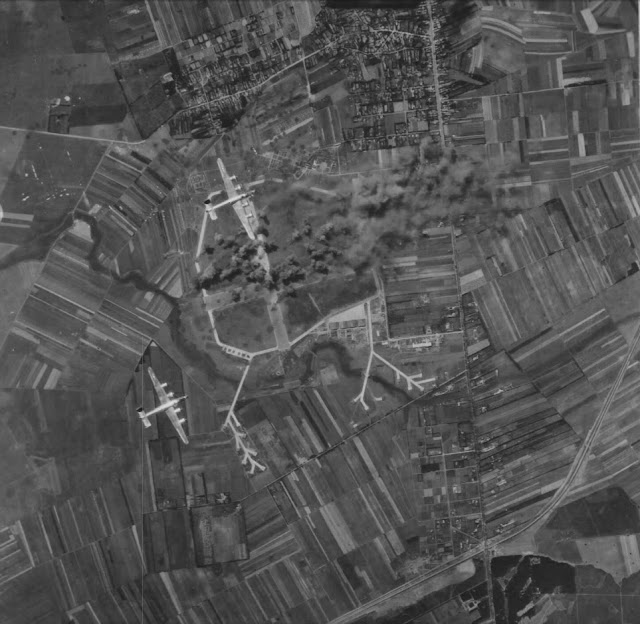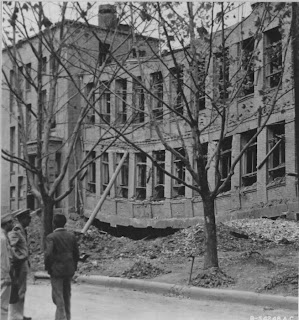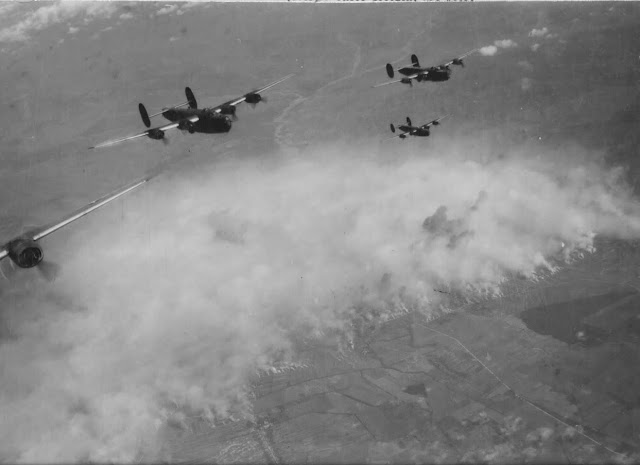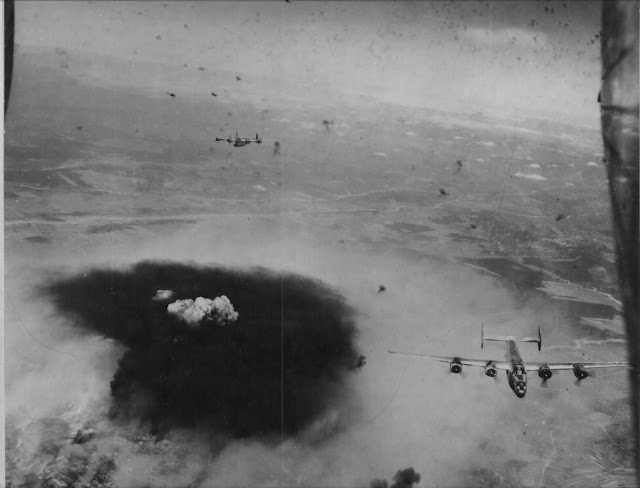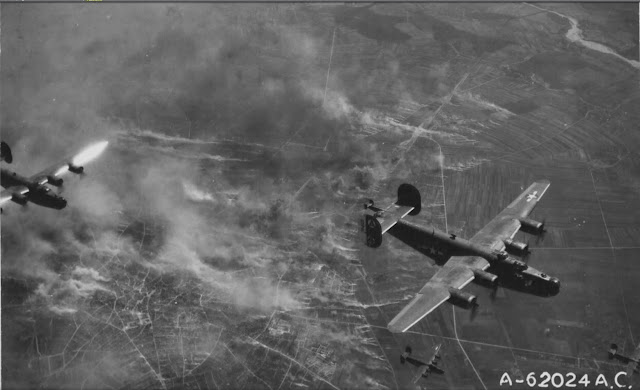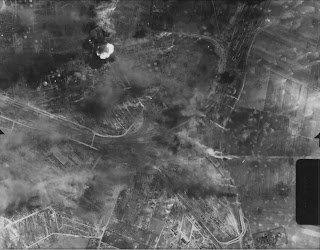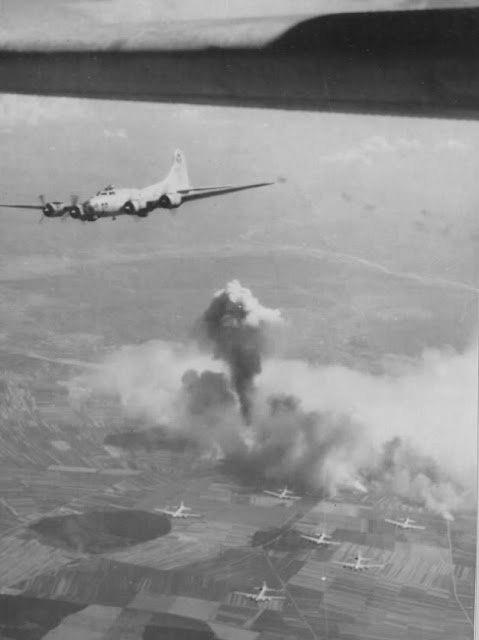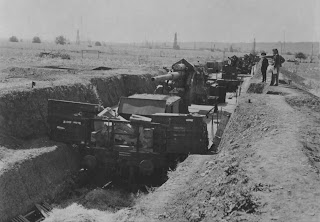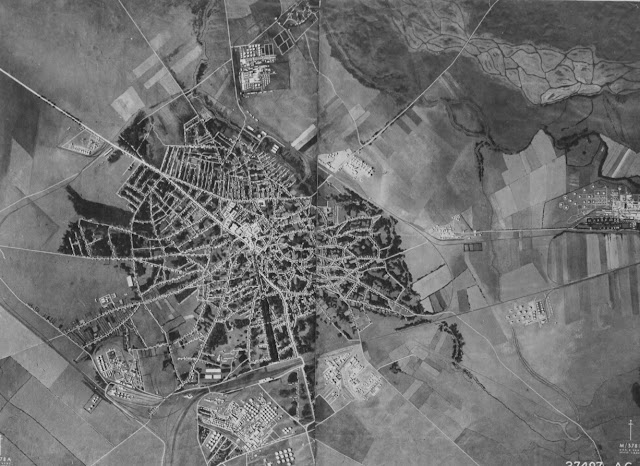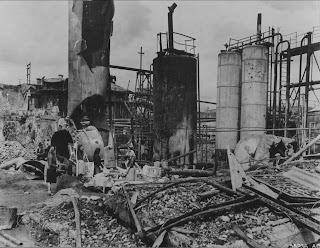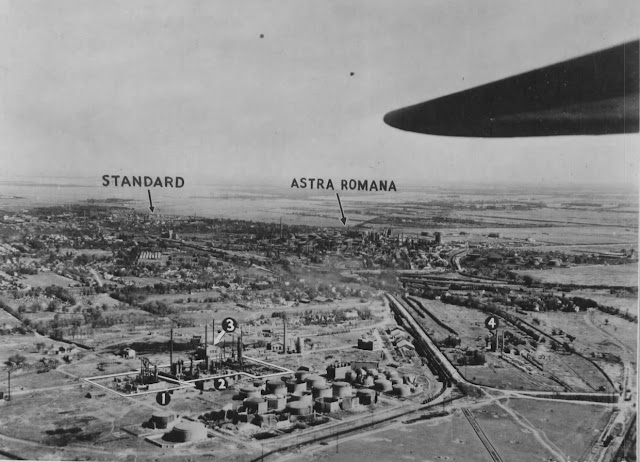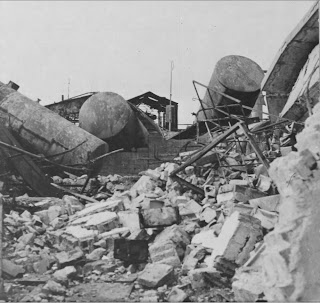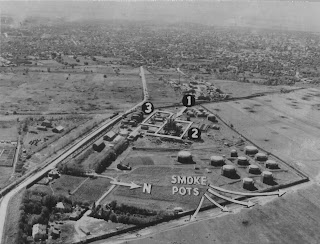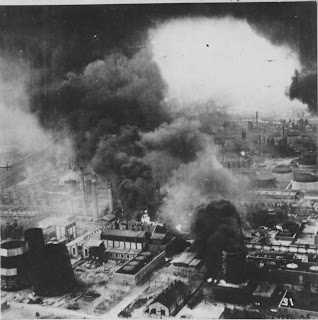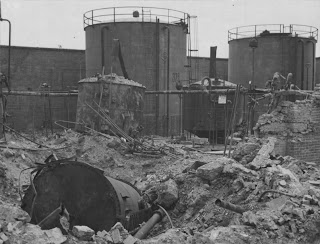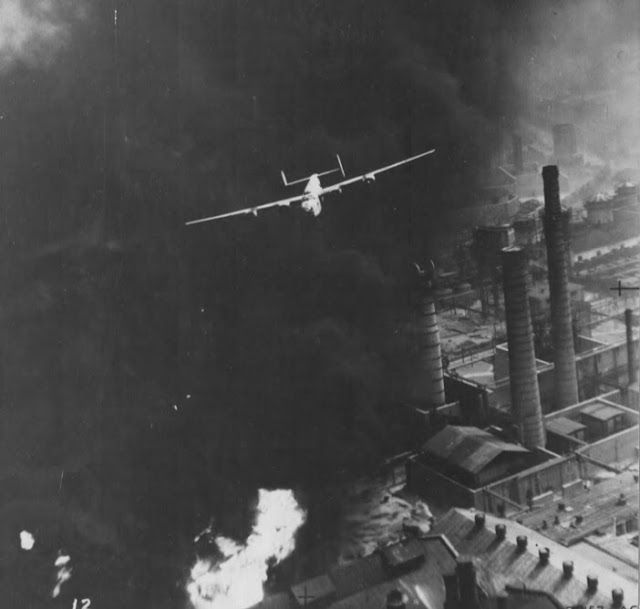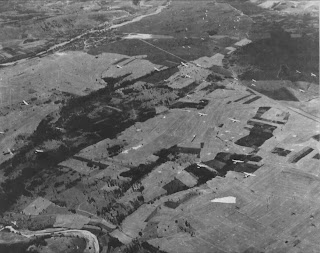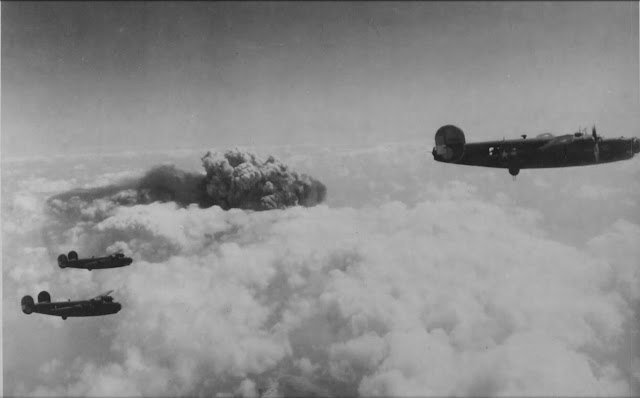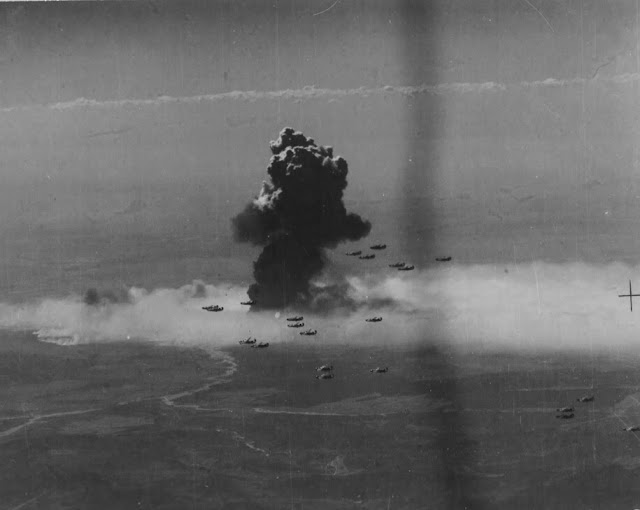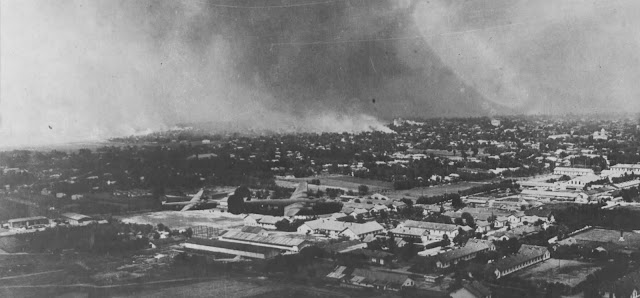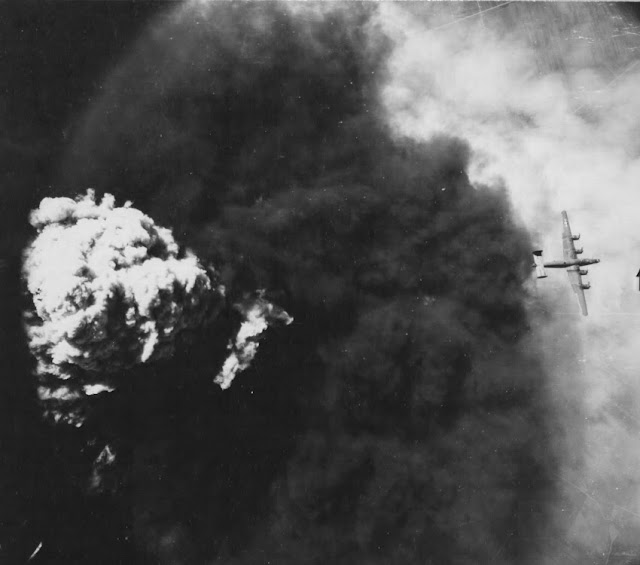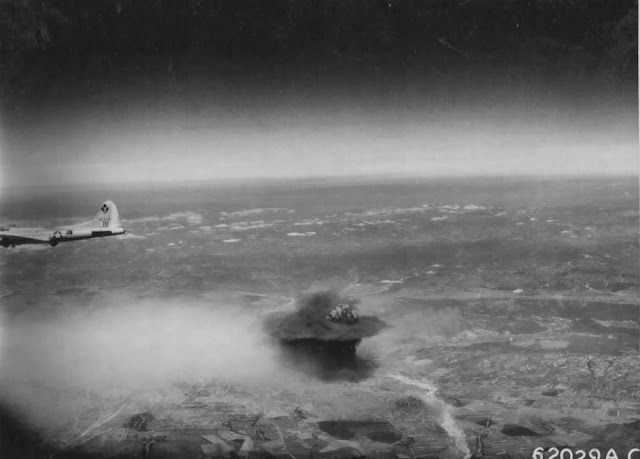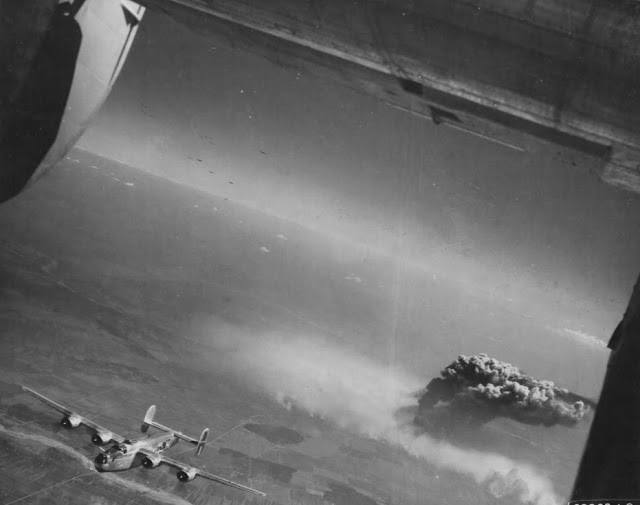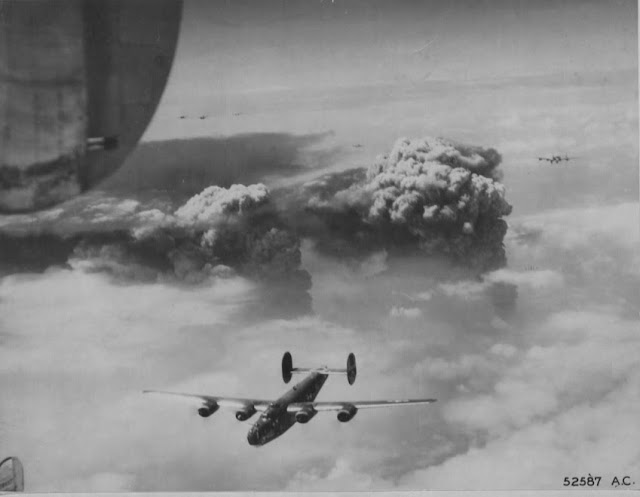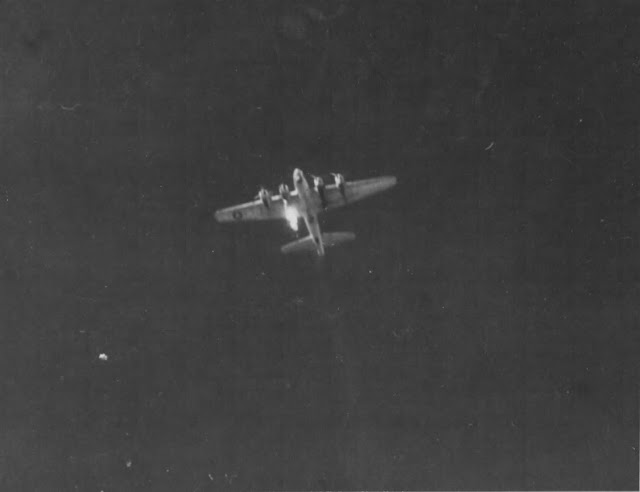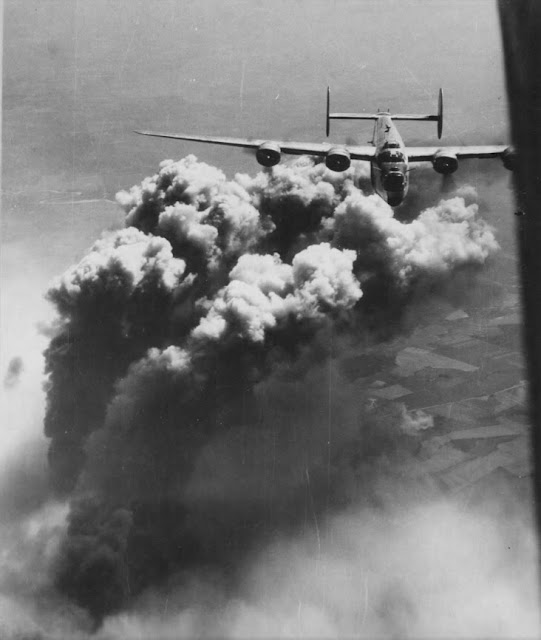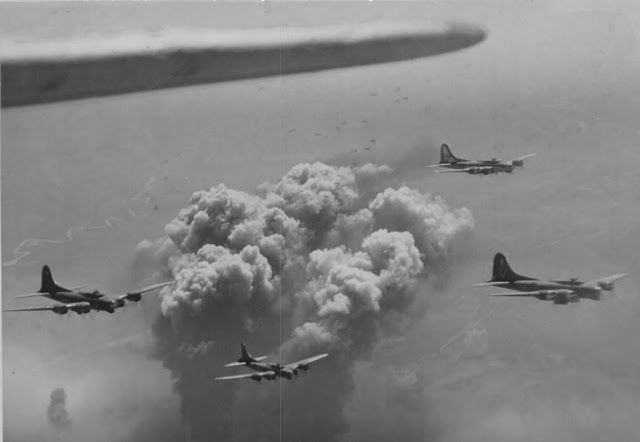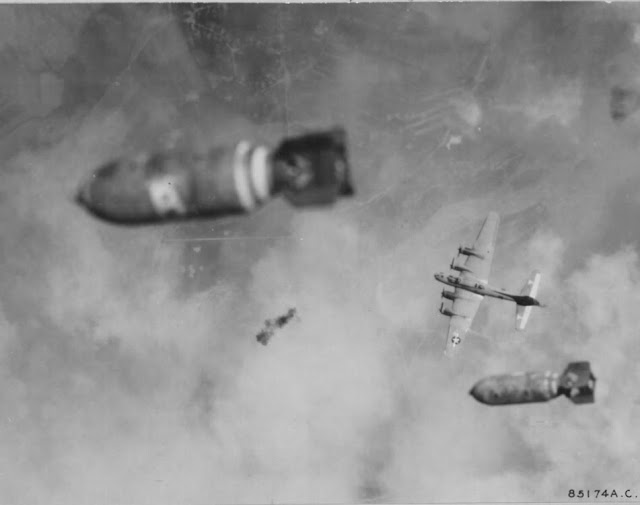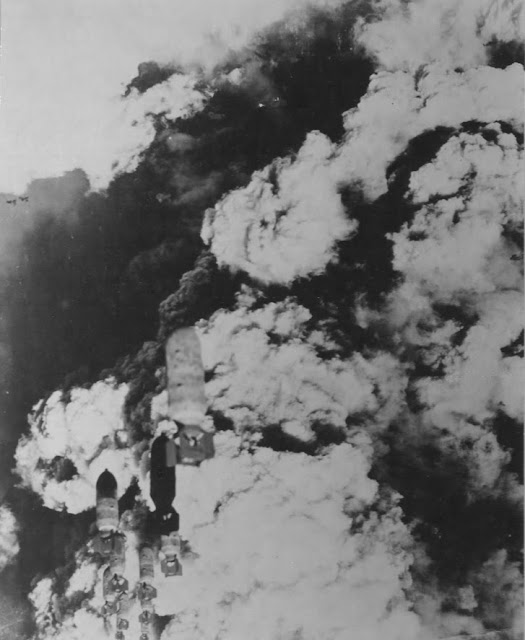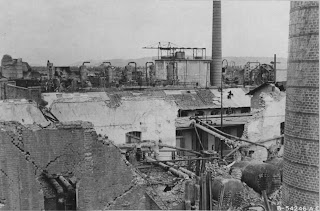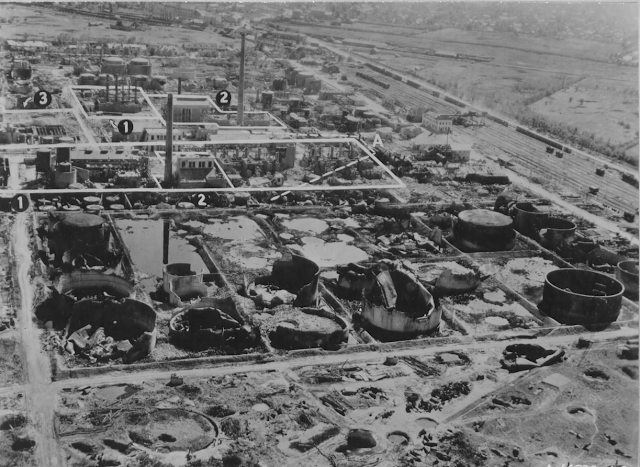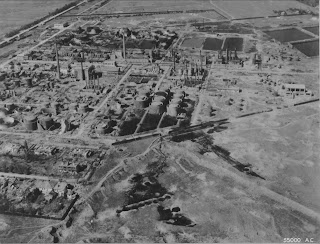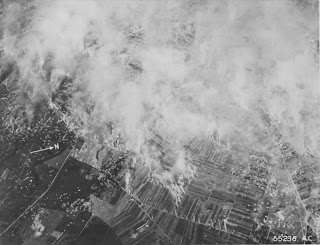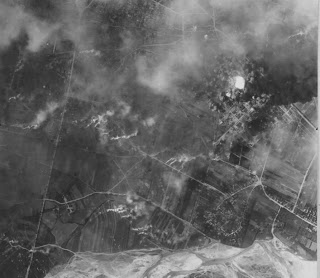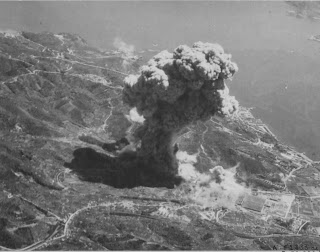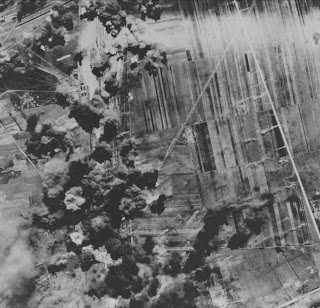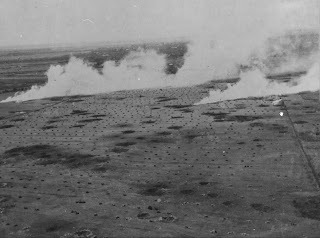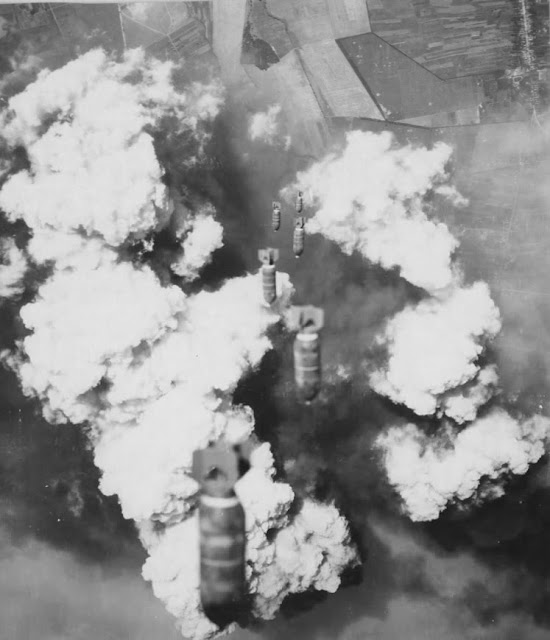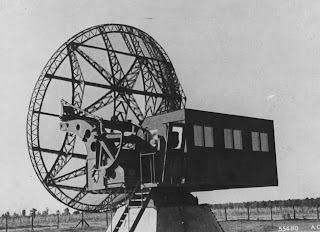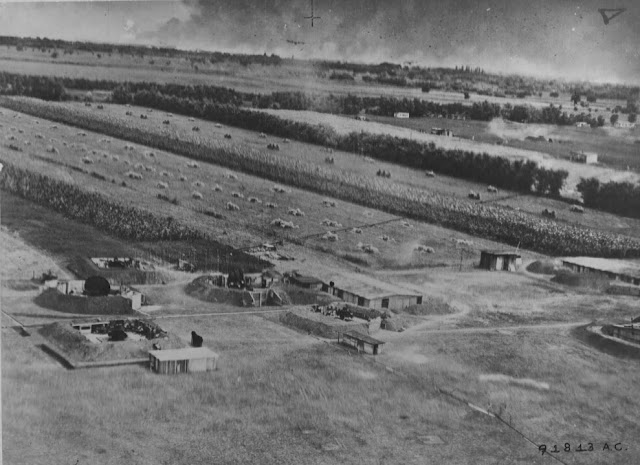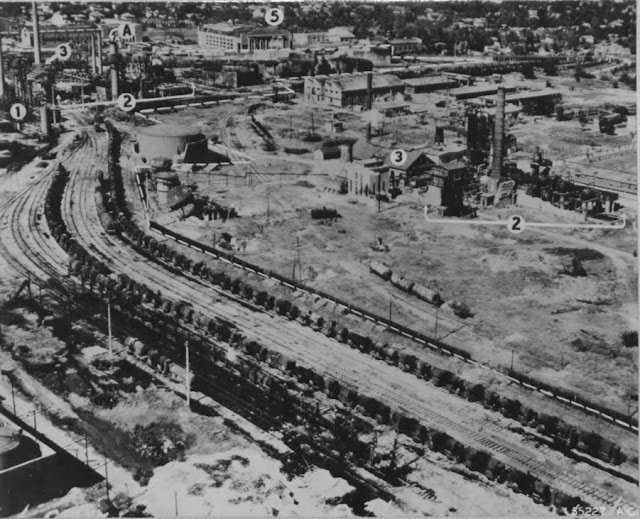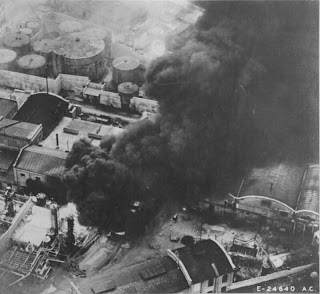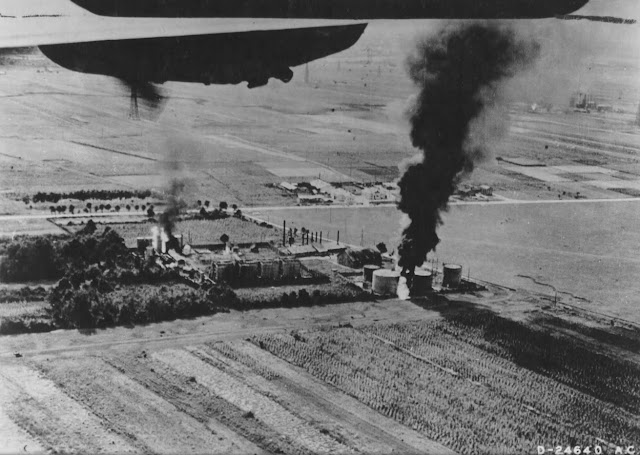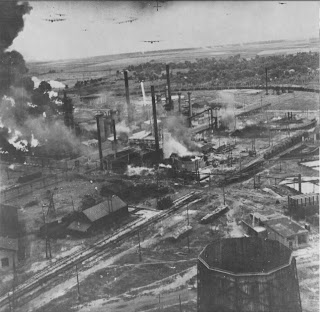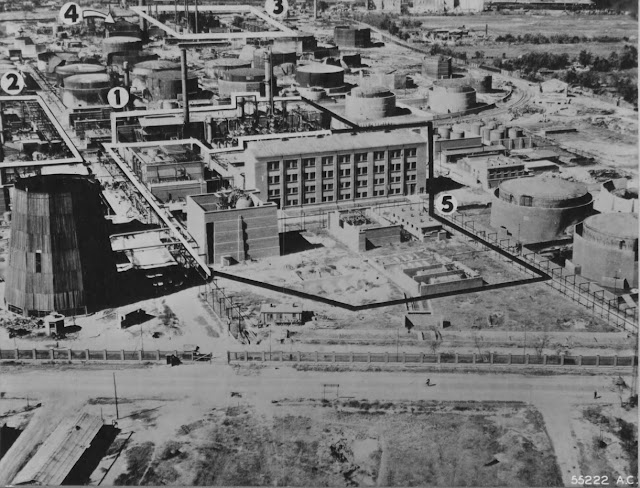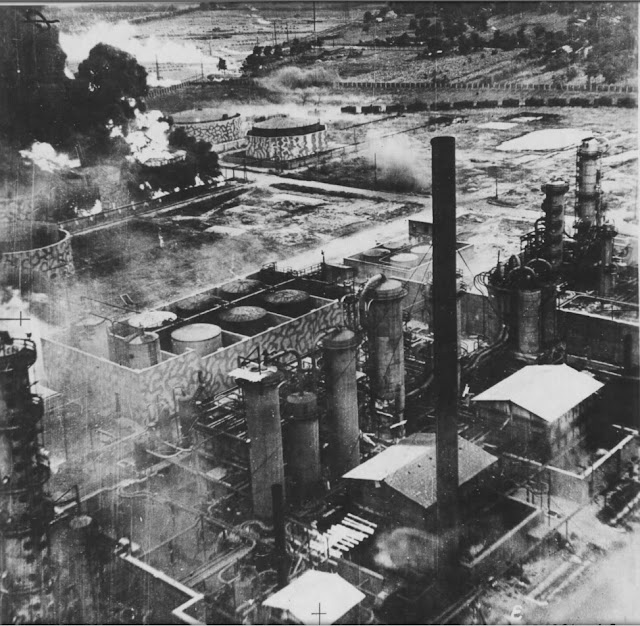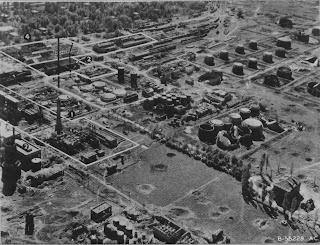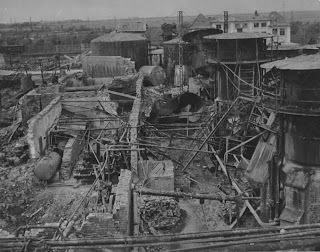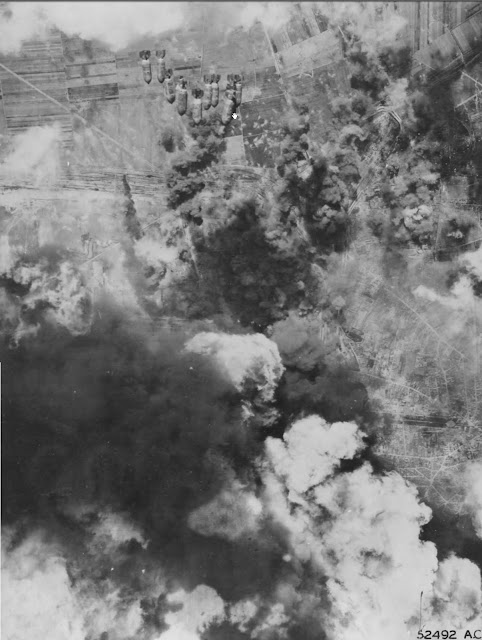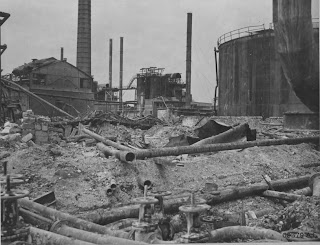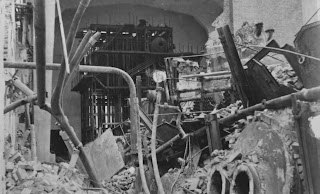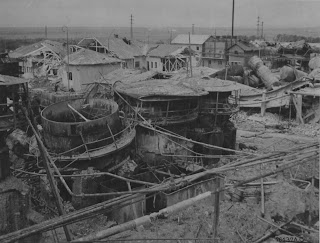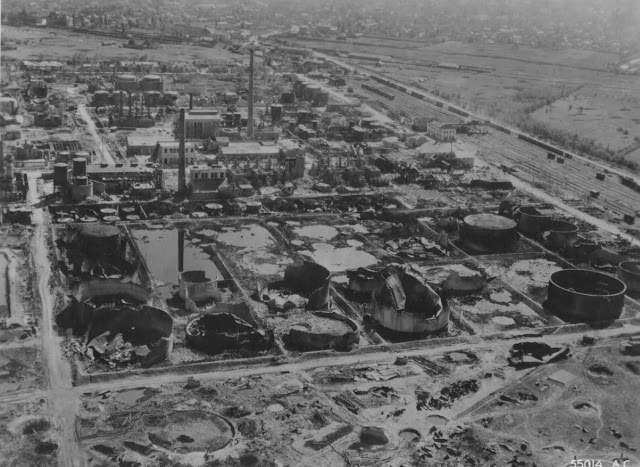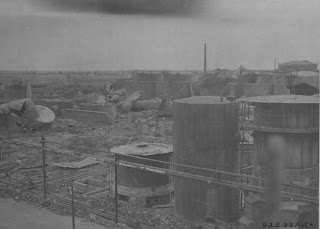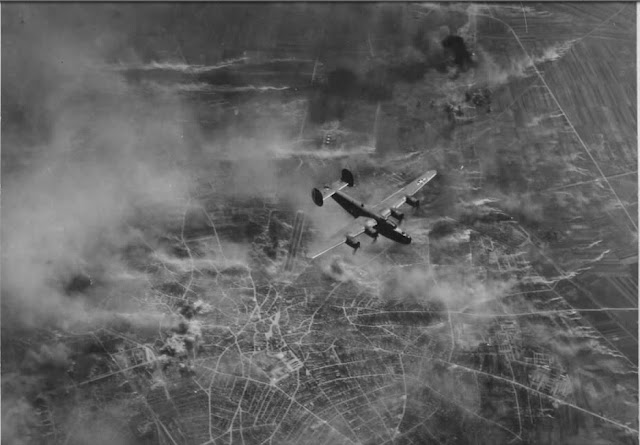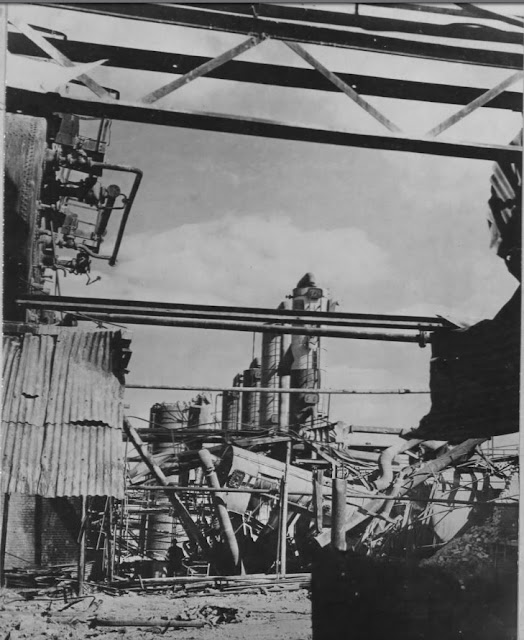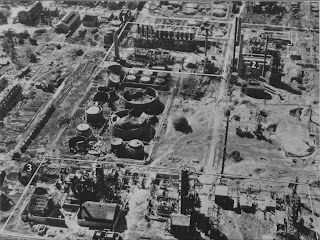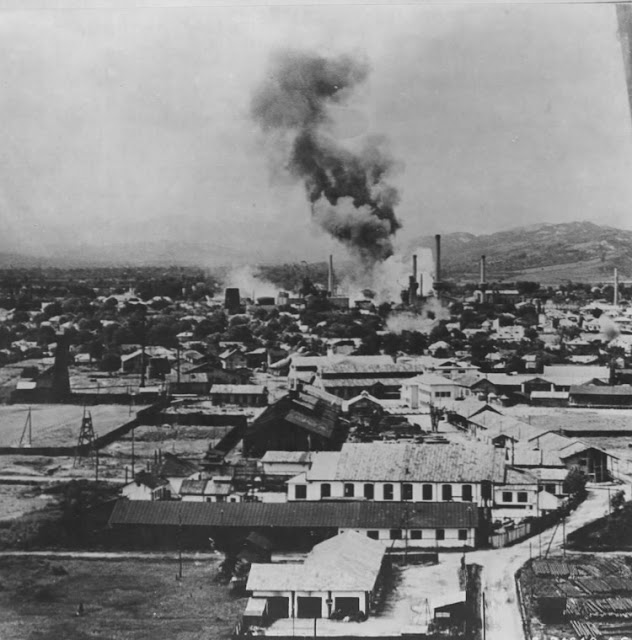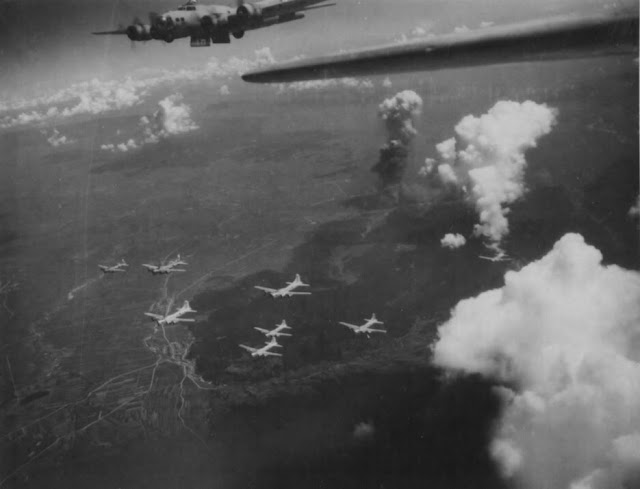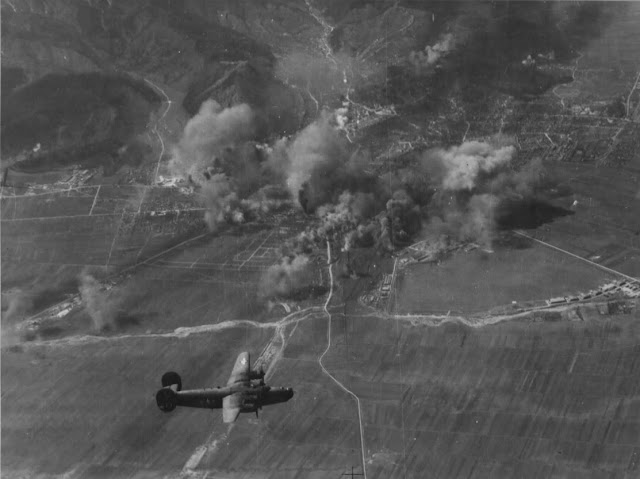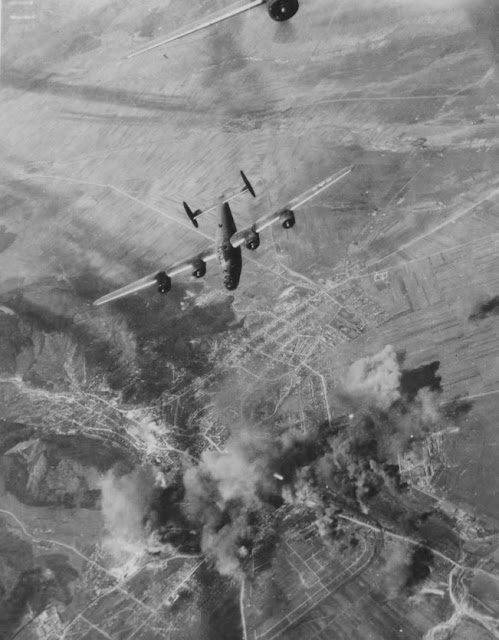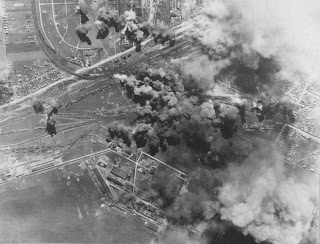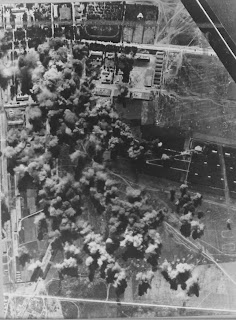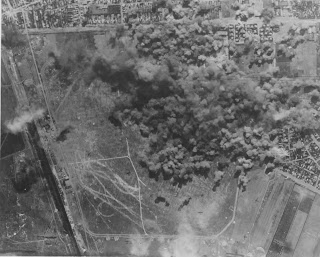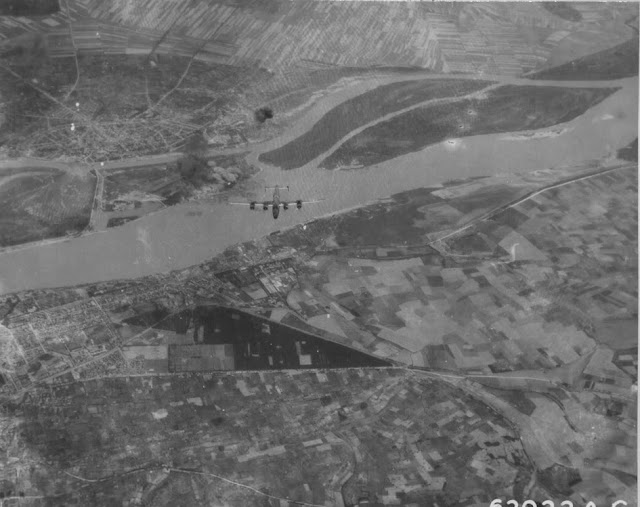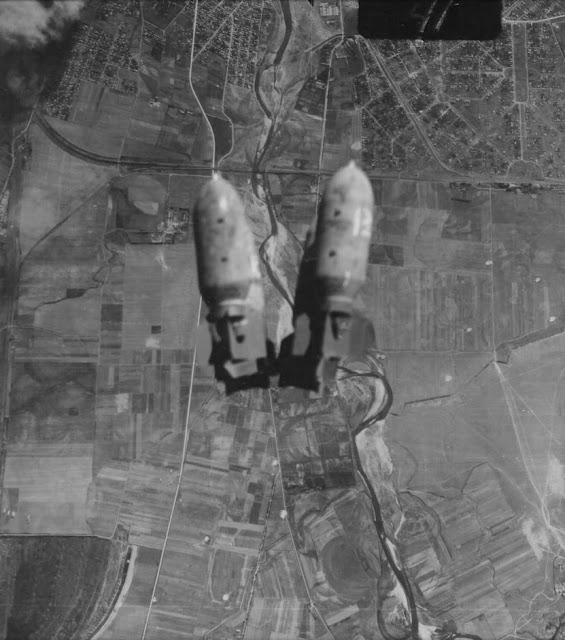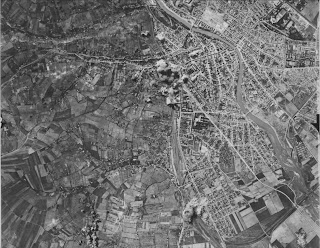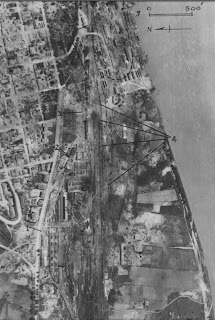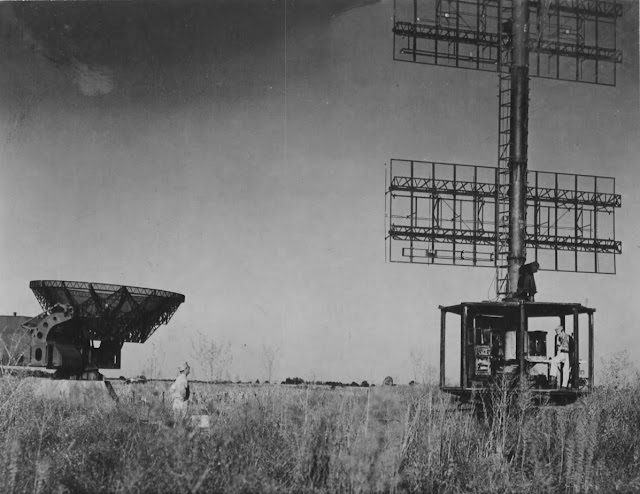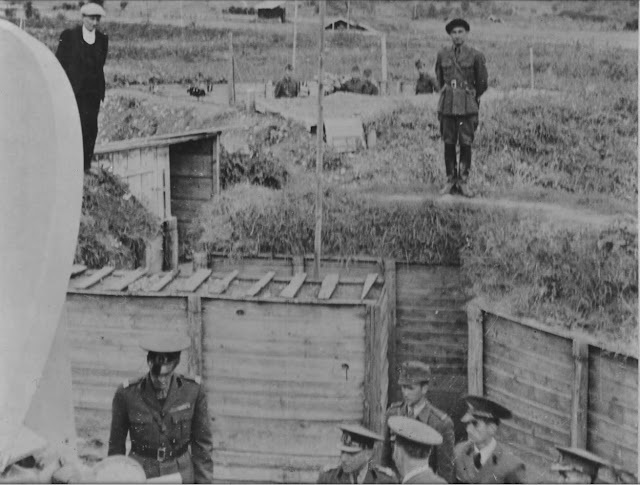- Details
- Hits: 7760
One of the most famous aerial combats of the Second World War is the Tidal Wave Operation, consisting in the American aviation attack on the Romanian refineries, on the 1st of August 1943.
Map refineries Ploiesti
The aim of this aerial attack was to destroy nine refineries found in the Ploiesti area, five of which are marked on the map. Romania was, from the begining of the 20th century, one of the main oil producers in the world and the most important one in Europe. The Romanian oil industry was among the most developped. Once Romania had entered the German sphere of influence at the end of the thirties, the Romanian oil became one of the main strategic targets. This fact was acknowledged by the Allies from the war’s onset, obstructing the German access to Romanian oil being one of their main aims. No less than 35% of the German army, navy and aviation combustible came from Romania and 70% of the crude oil production. Protecting this major target was a constant concern of the Germans. From the arrival of the first German troops into Romania, the Poiesti area refineries had been a main target. The first bombing of the refineries took place in June 1942 and was named the „Halpro” Operation, which is short for the initial „Halverson Project 63” that carried the name of Colonel Harry Halverson, who had the idea of a raid with heavy-weight bombers into the Balcans. There were 232 people and 13 bombers B-24 involved in this raid. The B-24 bombers were designed in January 1939 and the first such plane flew on the 29th of December 1939. It was equipped with four Pratt & Whitney engines, of 1200 horse power each. It weighed 24 tons with no cargo, it had nine machine-guns, which made it at least in teory independent of the fighter planes , and it resembled to a fire hedgehog. Its maximum speed was 516km/h.
B-24
Besides its full gas tank, it could carry a three-ton load of bombs and the ammunition necesssary for its own aerial defense. With a crew of ten, these planes came to be known as the „Liberators”. They took off from Fayd Base, in Egipt, on a straight route to Constanta. (See map.) Along the way, the group dispersed, as the aerial space of Turkey had to be sidetracked, and it regroupped above the Back Sea. From Constanta, the route continued to Ploiesti, crossing over Dobrogea towards Galati, flying over Muntenia up to the Teleajen River, from where they swerved South towards the target. They returned above Calarasi, and flew back to Habbanyah-Ramadi-Cairo. On exception, they could land in Siria or Irak. There was recorded a landing in Ankara, two in Alep in Siria, seven in Irak and three in Turkey. The effect of the „Halpro” mission was minimal, fact that the English also observed, the damage produced being minimal. But it had an effect on the Germans, making them aware of the American potential to strike the Ploiesti refineries. In this respect, general Alfred Gerstemberg, commander of the Luftwaffe in Romanian, took measures to strengthen the defense of the Ploiesti refineries.
Alfred Gerstemberg
Thus, in the summer of 1943, the aerial defense around Ploiesti was among the strongest in Europe. The Allies underestimated the German capacity for detecting the planes, believing that the latter did not have radars and installations of sufficient power to detect enemy planes other than by radio interception. The truth was that even since 1942 the Germans held control over a continuous chain of aerial checkpoints, unfolding from Peloponesus to Corfu and, from there above Albany, Iugoslavia and Bulgaria, up to the Balkan strongholds nearby the Danube. The Americans relied in this mission on a surprise aerial attack from a direction the enemy was not expecting and that was from Africa, a thing that seemed impossible at the time. Also, the Americans adopted the double strategy of radio silence and the low flight . The secret of the mission, however, was not preserved for a long time, since it had been partially revealed by the „Tidal Wave” strategists themselves who, so as to avoid a potential confusion – as it had previously happened during the Sicily landing, when American warships had opened fire on Air Force planes - , launched a coded message addressed to all the allies in the Mediterranean, according to which an important aerial expedition was going to fly over the space of Lybia and the north-eastern coast of the Mediterranean, without indicating the exact route or its destination. Only in 1961, the American military counterintelligence found out that, even since the beginning of 1943, an elite unit of the Abwehr – the German military intelligence service – located nearby Athens, was intercepting and decoding all radio messages of the Ninth Air Force Unit of the United States. The bombers were sighted for the first time from the watchpoint in Corfu, the information circulating rapidly towards Bucharest. In addition, several checkpoints confirmed the direction taken by the bombers, without being able to predict the final target.
German radar
The defense proper of the oil field was ensured by several elements, each with its own role in the defense strategy. Thus, at the first alert signal, the passive defense teams would come into action. Then, the obstructions ballons were lifted up. Equally, the Germans had the so-called artificial fog generators, devices used to „fog-up” the refineries, making them invisible to the bombers that dropped their load from a great height. Meanwhile, the ground-to-air defense was prepared and awaited its enemy to appear at a few thousand meters and, also, the fighter planes , located on eight runways, would take off and wait for the enemy at a height between 1500 and 5000 meters, the groups of planes being thus divided so as no enemy plane to be able to pass through their fire range. The obstruction baloons were 18 m long and had a diameter of 6 m, with a volume of 2300 cubic meters of gas (98,7% hidrogen), and also there were hung explosive charges along the sustaining cables, thus increasing the chances of pilots hitting such a baloon, which involved the instant combustion of the plane.
Obstruction ballons
Before the beginning of hostilies, out of the 178 „Liberator” bombers that took off from the base in Lybia, there were 164 heavy bombers inside the Romanian aerial space, two of which crashed during their flight to Romania, while twelve returned to the base due to technical problems. To defend the Ploiesti area, the Romanian-German defense had approximately 300 ground-to-air cannons and 200 Romanian and German fighter planes of the Me109 G and Me110 type, as well as IAR 80 planes. What distinguished the bombing mission on the 1st of August 1943 from Ploiesti was the American decision to carry out the raid at low altitude for bettter accuracy and for avoiding radio detection. To this aim, the Americans held intense training sessions in the Lybian desert, building replicas of the refineries onto which the bombing was carried out.
1 August 1944 Ploiesti low level strike
The bombing units participating in the raid belonged to the Ninth Air Force Unit, as well as to the 98 and 376 bombing units, alongside the mission-specific despatched units from the Eighth Air Force Unit, that is units 44, 93 and 389. The chosen route crossed above the Mediterranean and the Adriatic Seas, passing alongside Corfu Island, over the Pind Range in Albany, above Southern Iugoslavia and Southern Romania. When above Pitesti they were going to turn eastward, towards Ploiesti. The chosen targets were nine refineries from the Ploiesti area: Steaua Română, Română-Americană, Concordia Vega, Astra Română, Unirea Orion, Columbia Aquila, Creditul Minier, Standard Petrol Block, Unirea Speranța. In the morning of the 1st of August 1943, 178 B-24 bombers aligned themselves for the take-off. On taking off, one of the bombers lost height and crashed, none of the crew members surviving. Taking off and flight continued with no further incidents up to the Corfu Island area wherea the B-24 bomber named Wongo-Wongo started flying eratically and crashed into the sea, the pilot being unable to control it. Another B-24 strayed away from the bomber formation in order to check if there were any survivors. Due to the load of combustible and missiles, this bomber could not re-enter the formation and had to turn back to the base. After this incident, other bombers chose to return to the base or to land on various allied bases. When crossing the Pind mountain range, due to the differences in power setting of the engines, necessary for climbing at a higher altitude, the bombers split into several groups. The strict radio silence made this problem unsolvable, with severe consequences on synchronizing the attack. The route was followed without further complications and, once over Romanian territory, the bombers descended at the low altitude previously established. The bomber groups pursued the established navigation checkouts, yet on this occasion a new problem emerged that would have severe consequences upon the efficiency of the raid. After checking the navigation point from nearby Ploiesti, the 389 group left toward the refineries of Campina for a synchronized attack on the Ploiesti refineries. Col. Keith K. Compton and Gen. Ent made a navigation error that would prove particularly costly. At the second navigation point, that should have been in Floresti, they mistook Floresti for Targoviste, and pursued the wrong railway line, thereby leading their unit and the 93rd bomber unit towards Bucharest. Both units charged into the ground-to-air defense of Bucharest, many of the planes being wrecked. Several members of the crew noticed this thing and drew the attention upon the error committed. As a consequence of this navigation error and of the fact that the mission’s secret had been compromised, the bombers charged into the ground-to-air defense of Ploiesti that was under red alert. Several particpants to the raid declared that these were among the strongest and most dense artillery barrage they had encountered during the war.
Flak battery
The Romanian hunter units equally lifted all available planes into the air. A part of the fighter units were initially confused by the fact that a part of the American bombers were heading for Bucharest and by the fact that the bombers were flying at very low altitude. After the initial confusion, however, they intercepted the American bombers, adding to their damage. Although it was clear for the crew members that the mission goal had been compromised, they never faltered in fulfilling their mission. The strong air defense and navigation errors made them deviate from the original plan, so that some of the bomber units attacked only the objectives that stood in their way, and some refineries were only slightly hit. The only refinery that was taken wholly out of function for the whole duration of warfare was the Steaua Romana, attacked by the 376 and 389 units. On the Romanian as well as on the German side, the pilots and machinegunners attended to their duty unflinchingly, including in the form of a kamikaze-type attack by a Romanian aviator, Carol Anastasescu, that was piloting an IAR 80. After taking down a B-24 bomber, he fully crashed into a second one, taking it down as well.T he Americans also had the unwanted surprise to encounter an armoured train, equipped with air cannons, camouflaged as a regular freight train .This caused many victims among the B-24 bombers of the 98 and 44 groups. It took the entire prowess and strength of a B-24 crew to place a bomb above the train’s locomotive, thus succeeding in stopping it.
Carol Anastasescu
The manner in which the raid was carried out also generated special circumstances. Thus, a B-24 bomber flying low was taken down by a Romanian ground-to-air battery from around the Corlatesti area. Due to its low flying altitude, it crashed onto the battery operators, causing the death of both plane and battery crews.
Monument dedicated to the crew of 88 flak cannon in Corlatesti
Another B-24, dubbed the Jose Carioca, fell upon the women prison from the city of Ploiesti. The crew members and tens of the prisoners lost their lives in the inferno that followed the plane crash.
The effects of the bombings on the refineries went from severe to minimal. They were not as severe as the Americans had anticipated. The prompt intervention of the Romanian and German teams (some of which were urgently brought from Germany to this aim) limited the damage, so that a few months from the raid, the combustible production and that of other petroleum products was higher than before the 1st of August 1943. Out of the 178 bombers that left the base in Lybia, only 88 returned to the base, 55 of them being damaged during fighting and subsequently incapable of flight. On the return route, the planes were attacked by the Bulgarian aviation with planes of the Me109 and Avia B-534 type, which took down a number of planes and damaged others. Some of the planes landed on various bases in Cyprus, while others landed in the Meditterranean, nearby the coast of Turkey. 310 crew members were killed, 108 taken prisoner and 78 hospitalized in Turkey.
Avia B-135
It was one of the most severe losses suffered by the American Air Force in one mission during the war. It remains until today the only mission carried out by the American aviation for which five Medals of Honour were awarded, three of which posthumously, a unique fact in the history of the USAF. The Tidal Wave Operation remains, in the history of the Second World War and in that of the Aviation, one of the most famous air operations in which the conflicting parties brought proof of the highest sacrificial spirit.
- Details
- Hits: 6470
Between the 4th of April and the 18th of August, the bombing campaign on Romania was resumed by the allies. Besides the refineries of Ploiesti, they also attacked the infrastructure of the southern part of the country, the fuel stocks and the factories.
The American bombers belonged to the 15 Aircraft Army of the US. In 1944, besides the American bombers, there were also British bombers which took part in the campaign over Romanian territory, the RAF bombers taking part especially in night raids. The bombers used to take off from runways built in the south of Italy, and they were generally accompanied by fighter planes.
During the Frantic Operation, bombers would take off from Italy and, after completing their mission in Romania, they would land in Ukraine, reload with bombs and fuel and return to Italy while accomplishing other bombing missions in Romania.
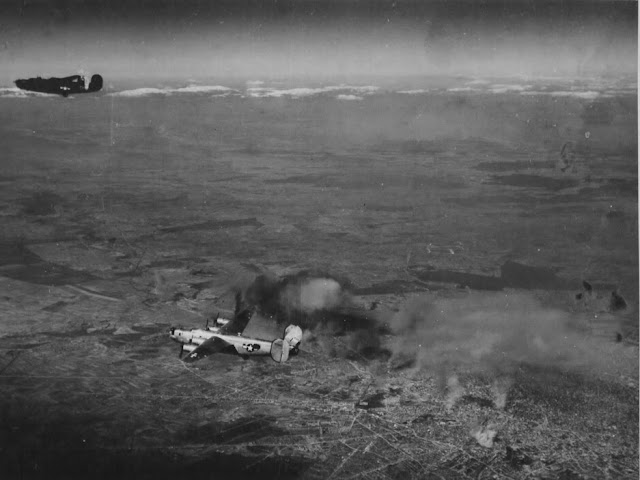
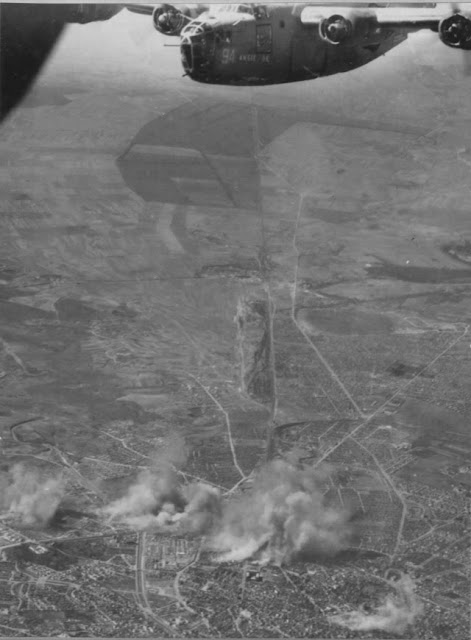
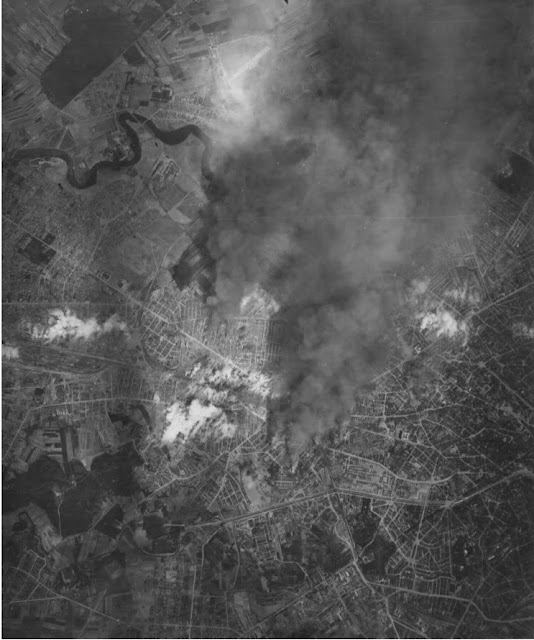
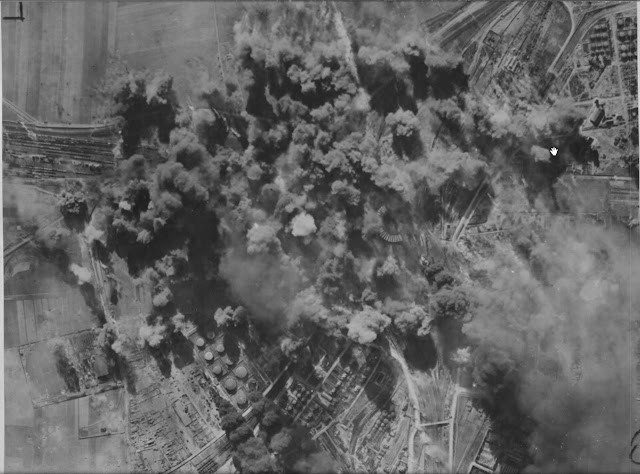

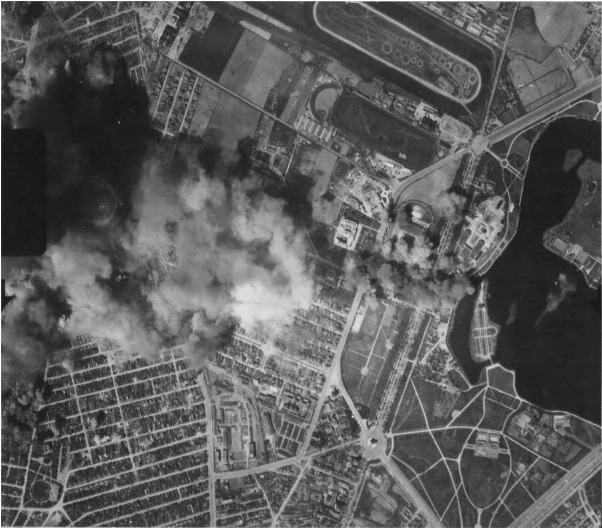
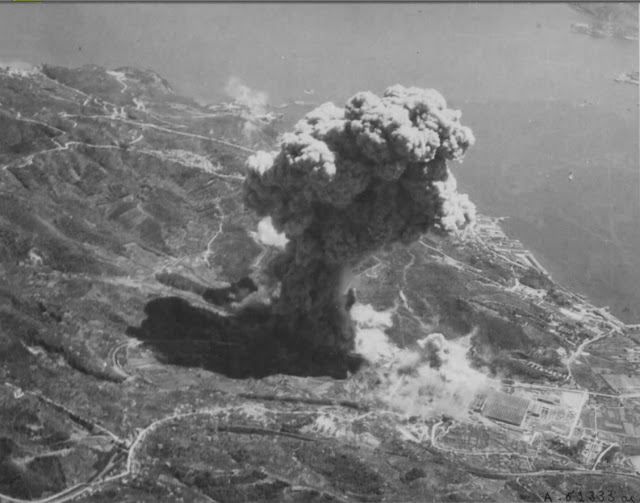
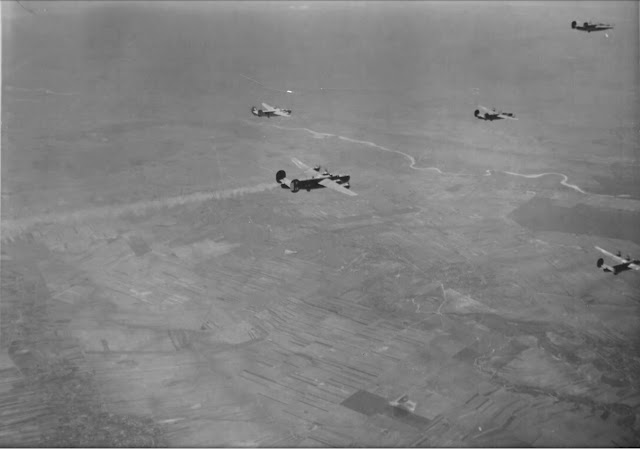
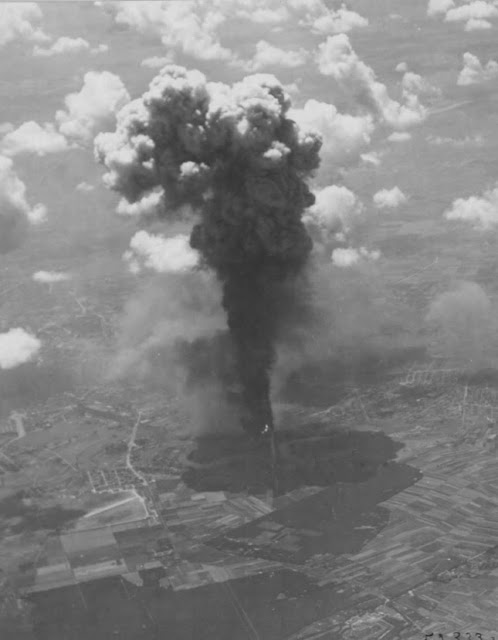
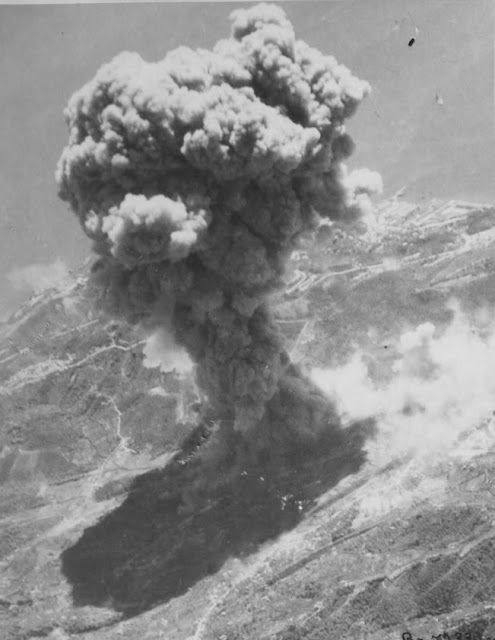
Page 2 of 2














